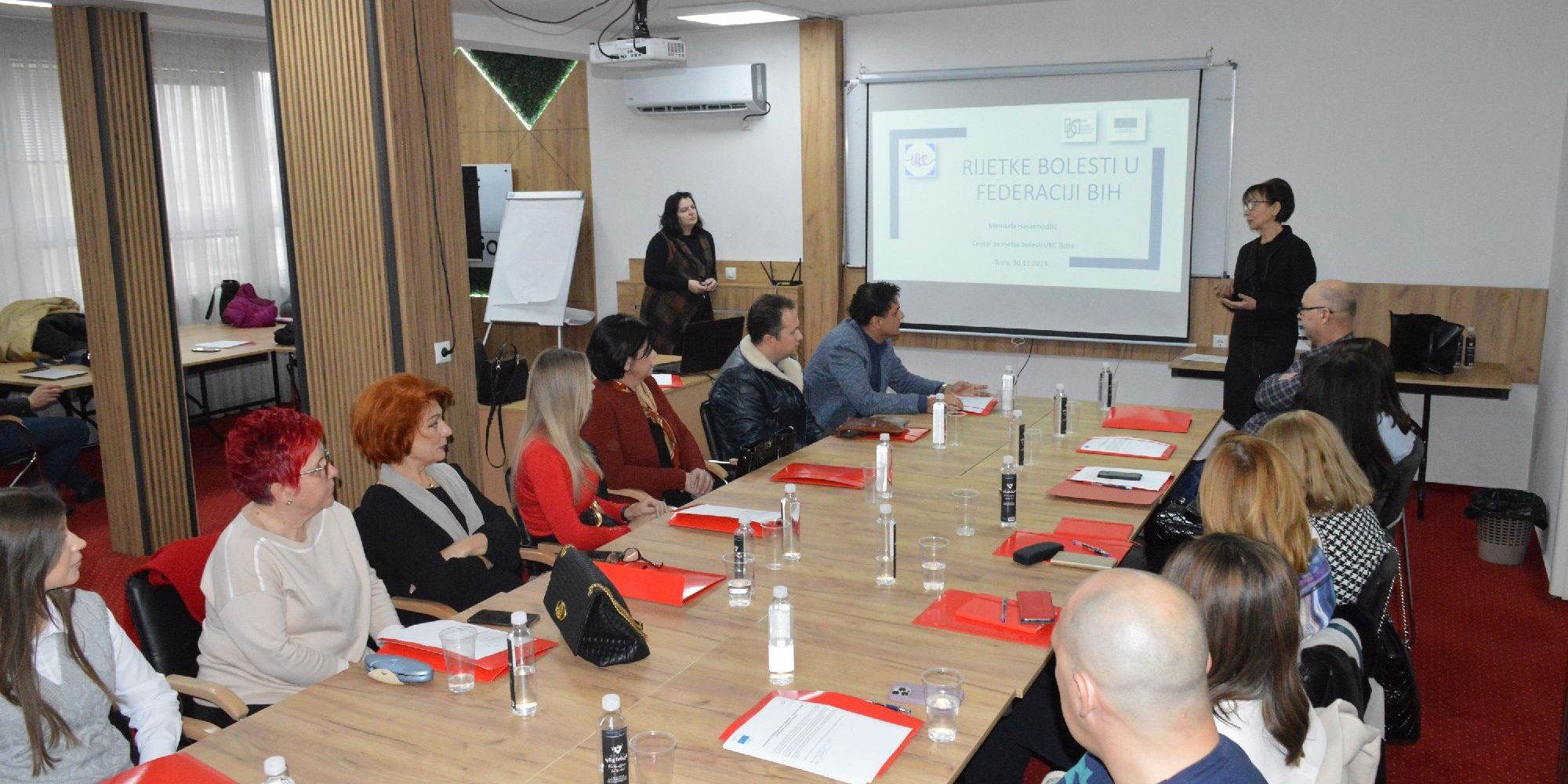A lecture on the recognition, diagnosis and treatment of rare diseases in the Federation of Bosnia and Herzegovina was organized by the Center for Rare Diseases, University Clinical Center Tuzla and the Institute for Population and Development.
Today’s event focused on the Center for Rare Diseases, the only one of its kind in the Federation of Bosnia and Herzegovina, to patients’ registry and the introduction of innovative drugs in the treatment of rare diseases.
Lecturing was organized within the framework of the project “Contribution of civil society organizations network to the improvement of daily life of people living with a rare disease in Bosnia and Herzegovina” with the support of the European Union.
Dr. Mensuda Hasanhodžić, head of the Center for Rare Diseases on this occasion said that the European Commission defines rare disease as any condition or disease affecting fewer than 5 individuals per 10.000. Within the group of rare diseases, there are “very rare” diseases, which affect one individual per 10.000, or “ultra- rare” diseases, which affect in one person per million inhabitants. ” Between 6 to 8% of the population in the EU suffer from rare diseases. Currently, it is estimated that there are 5,000–7,000 distinct rare diseases worldwide, of which 80% have been identified as having genetic origins. Most rare diseases are genetic even if symptoms do not immediately appear, and about 30% of children with rare diseases will not live to celebrate their fifth birthday.”she said during her presentation.
After the lecture, the attendees had the opportunity to watch a short film about rare diseases.






